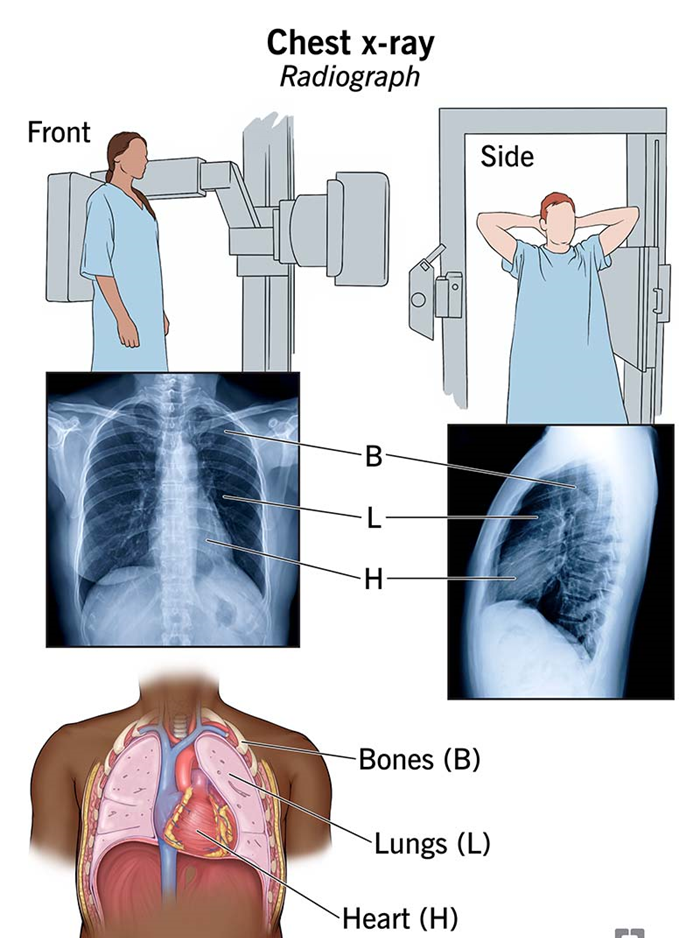A nurse enters a client's room and notices a small fire in the bathroom trash can. The nurse removes the client from the room. Which of the following actions should the nurse take next?
Close the fire doors and the doors to the clients' rooms.
Activate the fire alarm.
Extinguish the fire.
Remove all clients from the unit.
The Correct Answer is B
Choice A reason: Closing the fire doors and the doors to the clients' rooms is an action that the nurse should take after activating the fire alarm, as it helps to contain the fire and prevent smoke inhalation.
Choice B reason: Activating the fire alarm is the first action that the nurse should take after removing the client from the room, as it alerts the fire department and the rest of the staff and clients about the fire.
Choice C reason: Extinguishing the fire is an action that the nurse should take only if the fire is small and confined, and after activating the fire alarm and ensuring the safety of the client and self. The nurse should use the appropriate fire extinguisher and follow the PASS technique (pull, aim, squeeze, sweep).
Choice D reason: Removing all clients from the unit is an action that the nurse should take only if the fire is large and spreading, and after activating the fire alarm and ensuring the safety of the client and self. The nurse should follow the RACE protocol (rescue, alarm, confine, extinguish/evacuate) and the facility's emergency plan.
Nursing Test Bank
Naxlex Comprehensive Predictor Exams
Related Questions
Correct Answer is A
Explanation
Choice A reason: The client's current location and status are important information that the nurse should include in the report, as they affect the continuity and quality of care. The nurse should also inform the oncoming nurse of the reason and results of the chest x-ray, if available.
Choice B reason: The client's partner's visit is not relevant information that the nurse should include in the report, as it does not affect the client's care plan or outcomes. The nurse should focus on the client's clinical data and needs, not their personal or social information.
Choice C reason: The client's routine vital signs are not specific information that the nurse should include in the report, as they do not reflect the client's current condition or changes. The nurse should provide the actual vital signs values and trends, as well as any interventions or responses related to them.
Choice D reason: The client's occupation is not pertinent information that the nurse should include in the report, as it does not influence the client's care plan or outcomes. The nurse should respect the client's privacy and confidentiality and avoid disclosing unnecessary or sensitive information.

Correct Answer is B
Explanation
Choice A reason: This is not the correct choice because checking on a client whose telemetry monitor is continuously beeping is a task that requires nursing judgment and assessment skills. The nurse should not delegate this task to the AP, but rather perform it themselves or notify the health care provider.
Choice B reason: This is the correct choice because tagging a malfunctioning piece of equipment as broken is a task that does not involve direct client care or clinical decision making. The nurse can delegate this task to the AP, who can follow the facility's policy and procedure for reporting and removing faulty equipment.
Choice C reason: This is not the correct choice because determining whether an oxygen flow meter is accurately set at 2 L/min via nasal cannula is a task that involves administering medication and monitoring the client's oxygenation status. The nurse should not delegate this task to the AP, but rather perform it themselves and document the results.
Choice D reason: This is not the correct choice because instructing a client about the use of an incentive spirometer is a task that involves providing client education and evaluating the client's understanding and compliance. The nurse should not delegate this task to the AP, but rather perform it themselves and document the outcomes.
Whether you are a student looking to ace your exams or a practicing nurse seeking to enhance your expertise , our nursing education contents will empower you with the confidence and competence to make a difference in the lives of patients and become a respected leader in the healthcare field.
Visit Naxlex, invest in your future and unlock endless possibilities with our unparalleled nursing education contents today
Report Wrong Answer on the Current Question
Do you disagree with the answer? If yes, what is your expected answer? Explain.
Kindly be descriptive with the issue you are facing.
